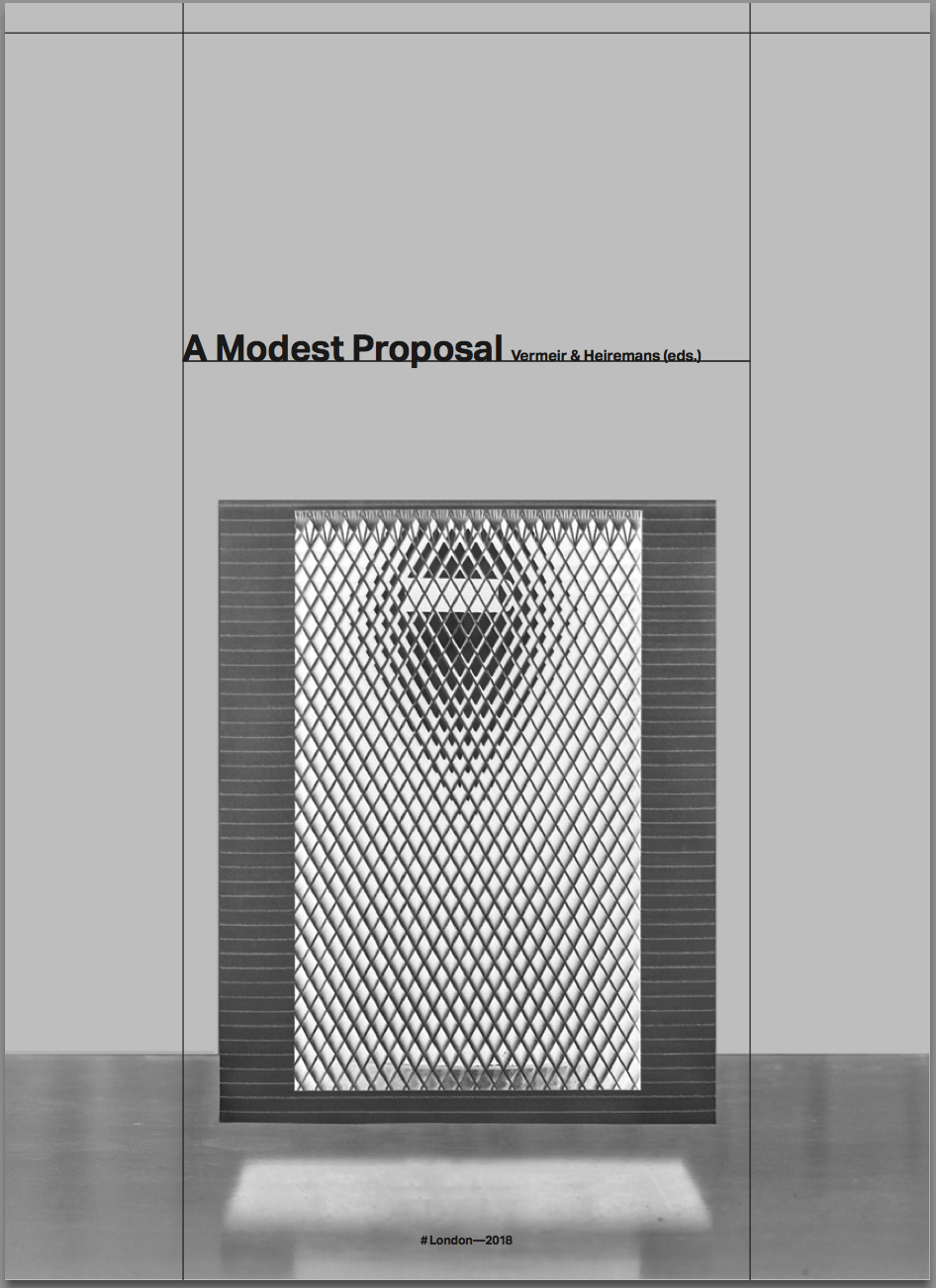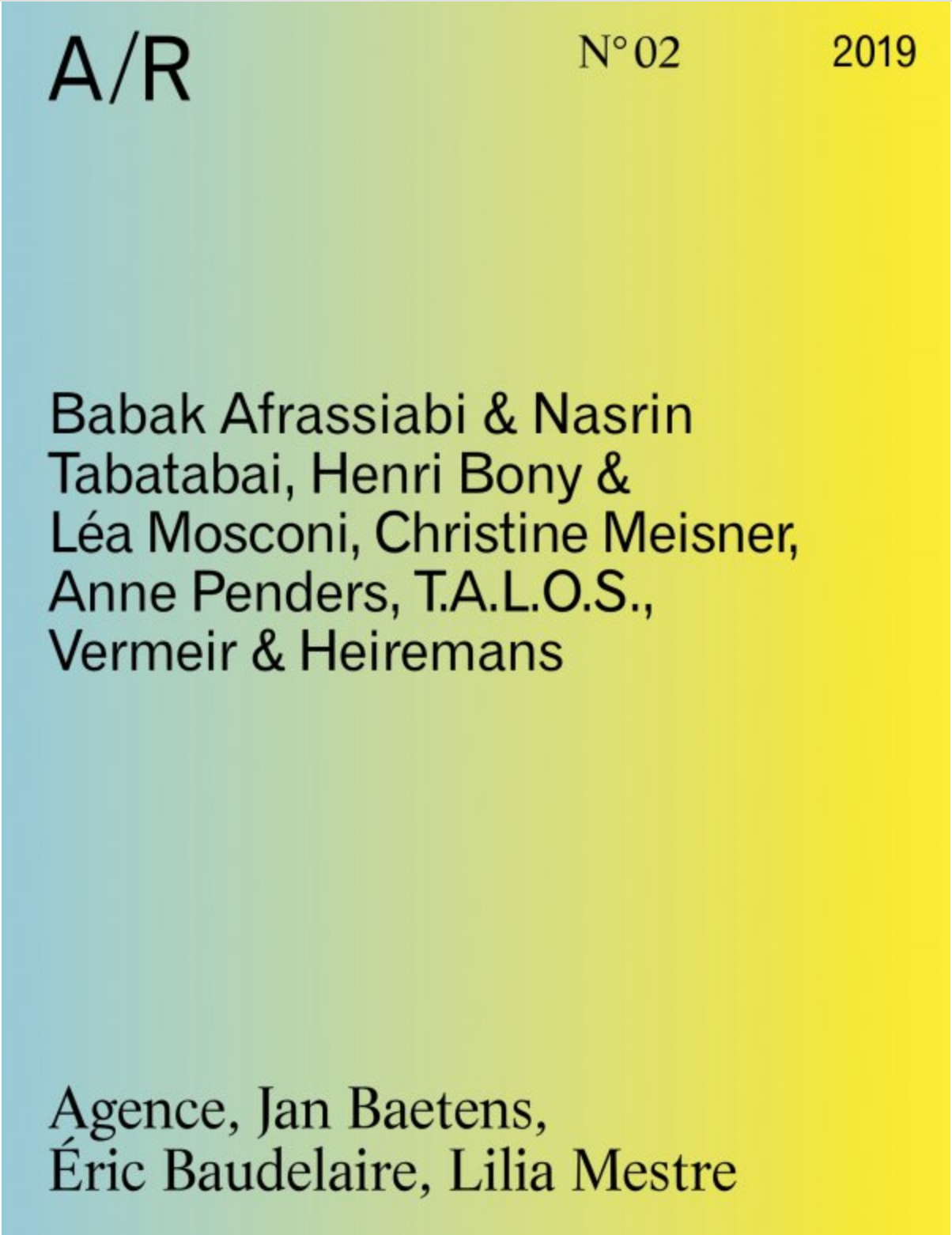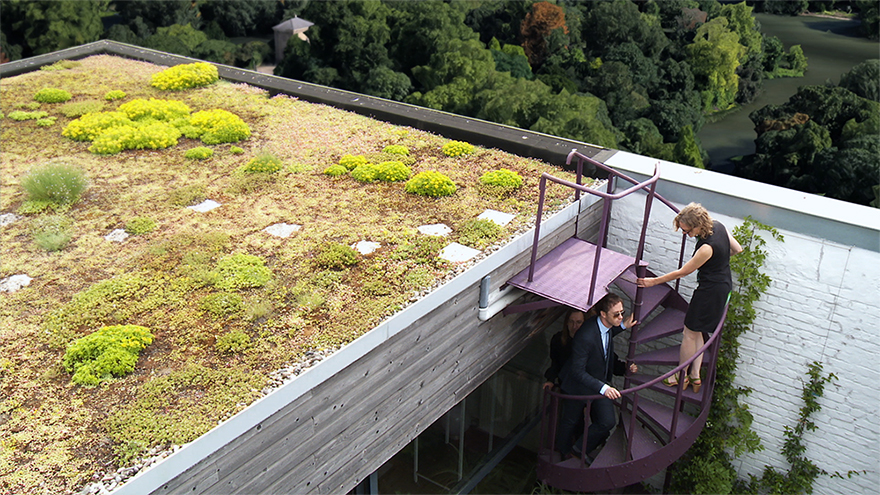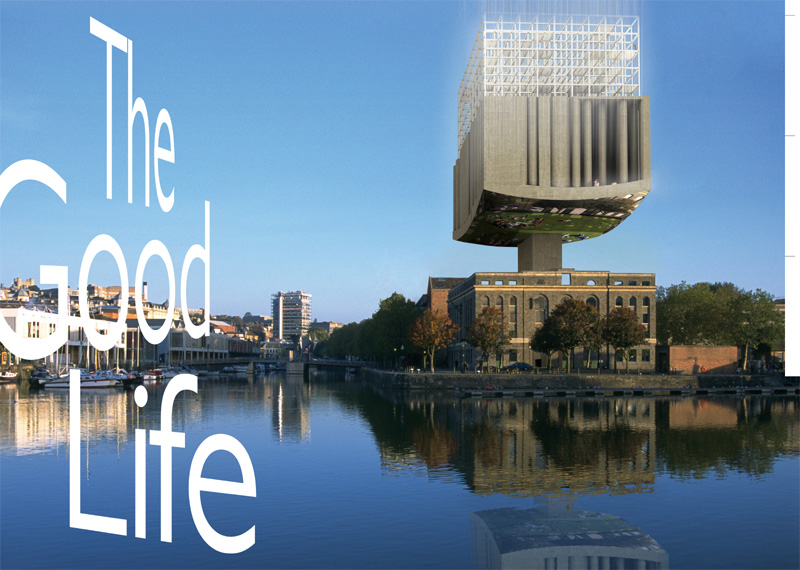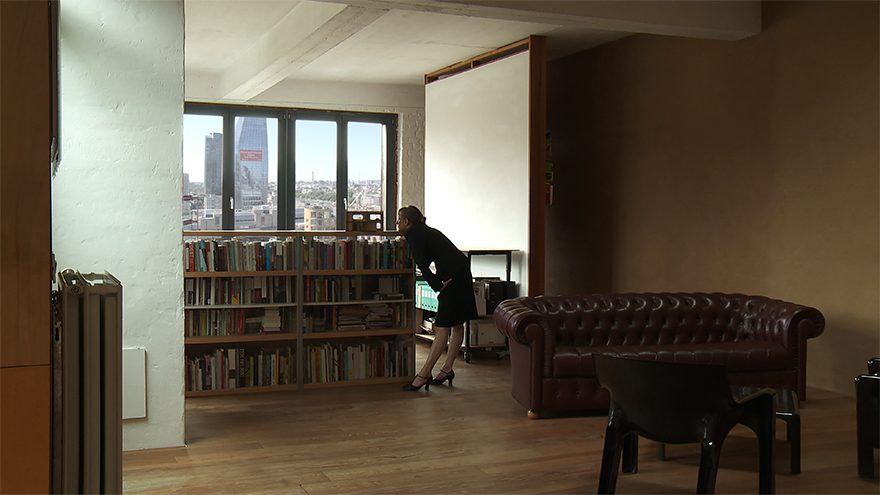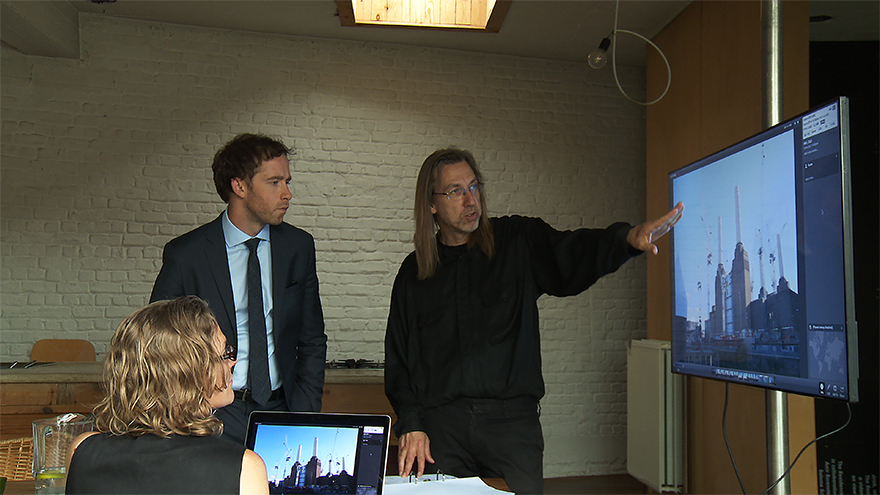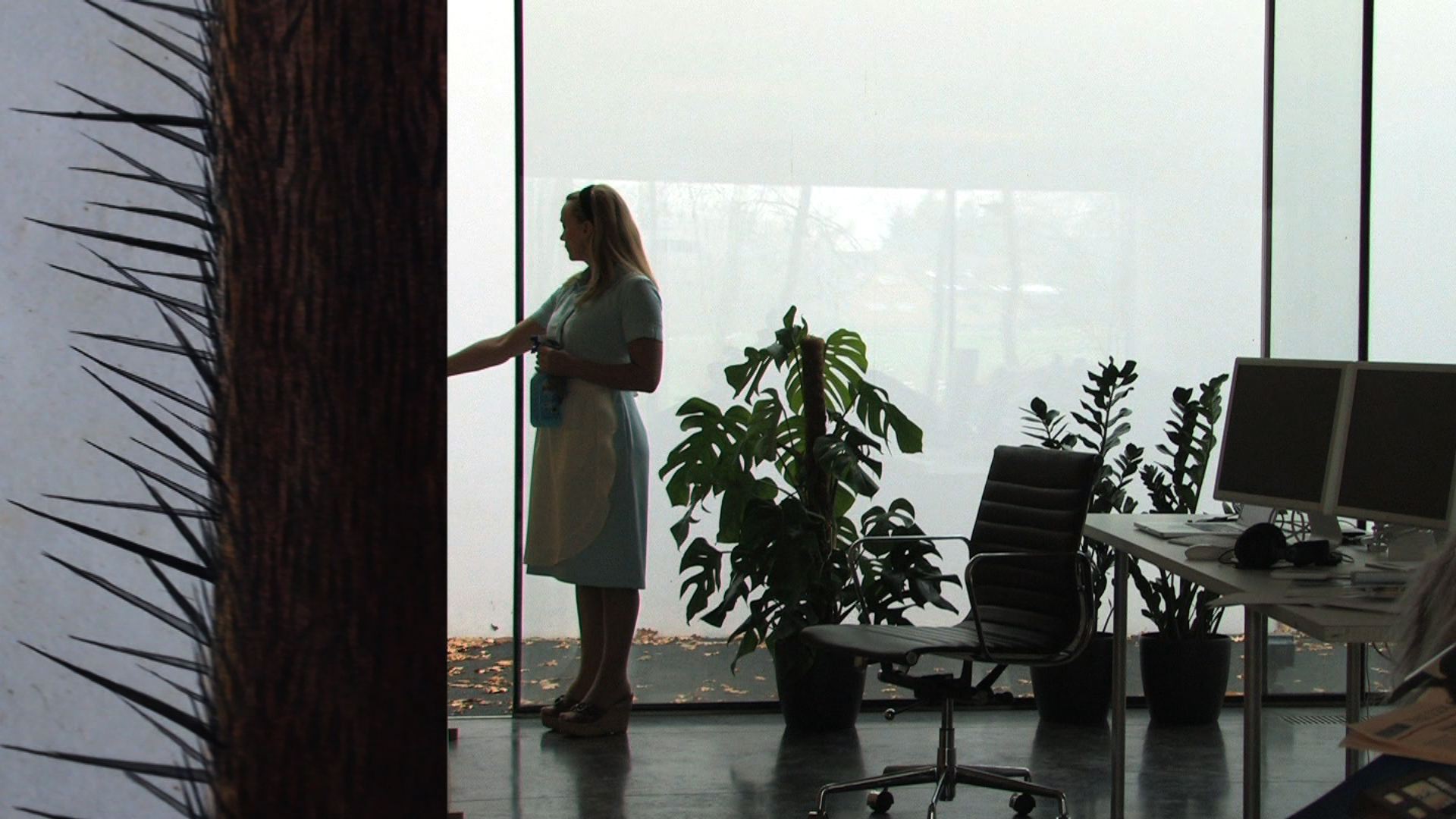Server: Apache/2.0.54 (Debian GNU/Linux) PHP/4.3.10-18
Content-Length: 1742
Connection: Keep-Alive
200 OK
A.I.R extension#00/talk Panayiotou & Vermeir
Christodoulos Panayiotou: What exactly is A.I.R short for?
Katleen Vermeir: It is derived from the expression “Artists In Residency”. We have recently purchased an apartment/loft, and the project entitled A.I.R reflects its renovation procedures.
CP: Was it purchased with the intention that it would constitute your new projects, or has this research developed from the acquisition of a house with all this involves?
KV: It went both ways. Having acquired this space, we decided to adjust it to our needs; this meant incorporating an archive, two studios, and everything else that we needed. The idea for this project arouse instantly.
CP:There are inexhaustible bibliographical references and referential artistic productions on the house as a philosophical or artistic exploration, and especially the urban house in the 20th century European scene. Nonetheless, I cannot recall of a specific art research on the historiography of lofts. What does this, by nowadays commonly used term, mean in the history of residence?
KV: Indeed, there are innumerable texts on the house, mainly on the house as it is organized by the urban bourgeoisie. Still, there is not so much written specifically about the loft, perhaps due to the fact that it has only recently developed into a space of residency. The word loft is used to describe several things but mainly a large unified space, on the top storey of a building, usually industrial. Of course nowadays lofts are not necessarily on the top storeys, nonetheless, the reference to the industrial aesthetics is maintained and it always refer to a large unified space without any divisional walls in it.
CP: In the current post-industrial cities, the word loft is often used referentially, to describe even newly built spaces, which lack the industrial origin that you mentioned. It arises thus as a residential model and it no longer necessarily constitutes a space whose usage has been modified. In Cyprus for example, where there exists a negligible industrial tradition, the word loft is used to describe a specific type of a newly built apartment which is something quite different to all descriptions you’ve mentioned.
KV: Indeed, that is true. The concept of space appropriated for residence is actually something that started in the United States around the 50s & 60s. The Unites States were the birthplace, so much of the term as well as the function of a loft, and it clearly was linked to former industrial buildings. It was actually a very significant period in the contemporary history of New York.
CP: Are we talking about that same period where Robert Moses, changed the character of New York?
KV: Yes, exactly. Robert Moses, the controversial urban planner, in that period proposed the automobile as the new King of New York. He imposed large streets, destroying a lot of the industrial heritage and demolishing huge apartment buildings. The first to react to his tactics were artists, who hurried to inhabit the buildings that were under a thread of being taken down. Immediately, this move was exploited by investors.
CP: Was then the only reason for this subversion the reaction to Moses’ tactics? I wonder what exactly this bizarre reaction presupposes… You know each era reveals a new residential behavior, which very often constitutes a point of reference in the process of understanding that era. For example during the renaissance we observe the opening of the house towards the outside space, with the incorporation of large windows that would allow the light to enter the building, and hence one could support that this may well be a symbolic representation of the social and philosophical revolution that was taking place at the time. In your opinion, which is the social analogue of the American artists of the 60s, who decided to reside in formerly industrial spaces?
KV: I think it was the intention to abandon the “charged” urban house. Of course a new series of problems arouse in lofts, as private moments were physically ruled out. The cancellation of separate rooms imposes a constant living with one another, which manifests and provokes several control mechanisms.
CP: It is a fact that for the past 100 years things are being organized round a new regime of cancellation of apparent diplomacy. The 60s, and even more the 70s, are not innocent decades with respect to this. They mark the times of the new-utopia and of sexual revolution. People no longer need to hide behind the walls of the 19th century; they may freely express themselves, all that was kept hidden before comes out. Is it in a way the end of the house for the family?
KV: Absolutely, the loft is a space for one or two persons and proclaims itself free. It is extremely uncomfortable for the family and in any case it requires the organization of a new mode of coexistence involving a lot more transparency.
CP: Beyond the revolution in the history of residence, and besides the science of art historiography, we are aware that loft spaces have played an essential role in the formation of contemporary visual arts and actually, this is not restricted to the visual tradition alone, but it also holds true for the representational arts. From the theater of Scheckner to the postmodern choreographic research of Trisha Brown, Simone Forti and Steve Paxton just to mention a few. This involves creators that are closely knitted with the potential of these new spaces.
KV: Yes, these references are actually part of our research. The title A.I.R, about which you were inquiring earlier, is derived from this very tradition and we are exploiting these characteristics that it offers. A.I.R was used by New York artists as an inscription at the entrance of their buildings. Originally, living in a loft was illegal and this sign was imposed so that in case of fire, firefighters would know that there were persons in the ‘abandoned’ industrial building.
CP: So, how does this new space, affect the visual production in particular?
KV: In painting for example, we observe following phenomenon: In their effort against the organized art market, artists start producing enormous paintings:this was enabled by the large spaces in which they were working. Lofts, eventually also became the exhibition space…
CP: That is to say that this new space affects the morphology of artistic production?
KV: Yes, and something which has proven to be opposite to the intentions of the artists, the urban middle classes quickly became interested in this new lifestyle. Consequently, loft-living was reduced to another fashion.
CP: As it seems, this is where this reversal arises, that is, how the loft developed into the absolute space of the successful New Yorker businessman.
KV: Yes, and not only that; it is indeed interesting to see how the loft which originally constituted the locus of residence for a group of artists, with specific intentions, eventually ended up as a model of success, like you said before, in countries without any industrial prehistory. To go back to art, as the artists changed the dimensions of their work, new exhibition spaces for these became necessary. Large paintings would not fit into the traditional galleries, which were designed in reference of collectors’ homes. Hence, the White Cube gallery type was created. In the meantime, art was no longer an innocent internal affair. This was all happening in the Cold War years and the United States were using art as a propaganda weapon. This is a nation that has spent a lot of money to export its art, mainly by promoting the idea of free expression by saying “look how free we are”. Almost just as the Soviet Union has used art as propaganda, so did the United States, only with a different application.
CP: Indeed, the political representation in American art is camouflaged, or functions metonymically, while Soviet art quickly became the graphic representation of the ideology that it promoted.
So, you purchased a loft, referring to this whole story …
KV: Yes, and we then began exploring all that we have discussed. Lately, my boyfriend was working with large wooden installations, where he would use the same material in different forms, recycling them. We would always make fun saying that with all this effort and work we could build a house. And eventually that’s exactly what we did; we used all his pieces to organize the loft that we have purchased. Of course they are no longer there as art works. The wood that made up Ronny’s sculptures is now the wooden floor, or the wooden structure of a wall...
CP: And how do you plan to exhibit in this idiosyncratic piece of art/house?
KV: Our house is our work; that which we exhibit to the public is not the house itself. For Instance, we do not invite people over to show it to them, and we are not going to do this, it goes beyond our intentions and there is nothing in particular for anyone to see other than a house.
CP: So, in what way is this research being promoted?
KV: We have decided to present a series of Extensions; that is activities that will represent our house. Consequently, this also constitutes a comment on the way in which we often get to know about contemporary architecture. Architecture is communicated in a strange way; it does not constitute an experience, as it should. It would be reasonable for one to visit a house in order for them to see it. To walk in it, to sit there... Nevertheless, we mostly know architecture through books and magazines. That is, we know more about architecture as an image rather than as an experience.
CP: The other day we were talking about Julius Schulman’s show in Istanbul. This great photographer has organized the aesthetics of modernist architecture through the known sterile method of its presentation, creating thus the image that has prevailed about the modernist house.
KV: Exactly, for Julius Schulman the interest was to create a perfect image that would represent these houses. In the same manner, we create the desired representations for our house through these Extensions.
CP: So you would call an Extension any exhibition that you produce which refers to your loft.
KV: Yes, but not only exhibitions, not in the strict sense. An Extension can be any representation of the house. For example the conversation that we are having right now is one of our Extensions. In a similar way we have done a radio interview.
CP: So, your work is concerned more with the image of the house rather than the house itself.
KV: It’s the house but it begins to exist outside the house. For example Le Corbusier’s Villa Savoye must certainly exist somewhere but we all know it as an image. That is exactly what we mean by the term Extension…
(20/9/2006, Istanbul)
* Christodoulos Panayiotou is a visual artist who lives and works in Limassol, Cyprus. His work explores the complex interconnections between our most innate desires and their cultural consruction. He is the winner of the DESTE Prize, 2005.
